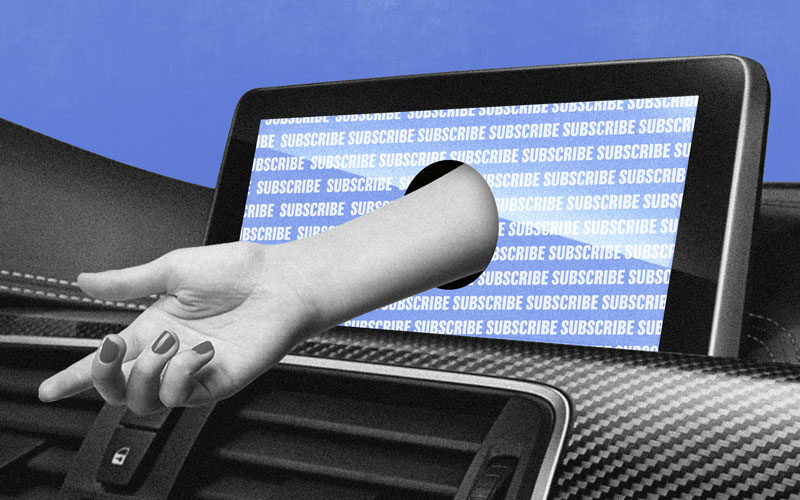With melting glaciers, rising temperatures, and proliferating tropical storms, global warming is making its presence known.
Nonprofits and world nations from the WWF to the 350 to the UN’s Sustainable Development Goals are uniting in battle. And now a surprising new ally has stepped in: crypto.
It’s surprising because of the irony. Bitcoin alone kicks out around 22 million metric tons of CO2 a year, and burns through 150 terawatt-hours annually – more energy than the population of Argentina. Its immense power usage is due to its decentralised network, which requires multiple computers to verify a single transaction. And alt coins share a similar story.
But moving carbon credits onto the blockchain is the next big idea in offsetting corporate carbon dioxide emissions.
Toucan, a crypto platform largely responsible for tokenizing carbon credits, views this as an improvement of a market that’s “disorganized, archaic, and lack[ing] incentive“.
With the voluntary market hitting an astounding USD $6.7 billion margin at the end of 2021, can we all take a breath of fresh air (pun intended) and trust crypto to save our planet?
The dark history of carbon offsetting
The first carbon offsetting project occured way back in 1989, long before Bitcoin was a twinkle in a tech bro’s eye.
In 1989, the Applied Energy Services (AES) planted forestry in Guatemala to offset carbon emissions from their new coal power plant in Connecticut. Experts state this power plant would have generated an astounding 19 million tons of carbon over the plant’s 40-year lifespan.
It was an innovative plan – the first of its kind. CARE International, a major humanitarian agency, praised AES’ attempts to offset greenhouse gas emissions as a “success”, believing it would provide “a wealth of direct and indirect benefits for the people of Western Guatemala”.
Did it succeed? Not even close.
In 2009, the Society and Natural Resources journal decided to review the project. They found that not only did AES fail to meet their carbon-reducing efforts spectacularly, they may have actually made matters worse for the citizens of Guatemala, summarising: “These recommendations compound the problem of requiring carbon sequestration in exchange for supporting ongoing poverty alleviation efforts.”
Think tanks at AES, CARE, and WRI estimated between 15.5 and 16.3 million tonnes of carbon would be offset over 40 years. The final number? 270,000 tonnes.
AES was just the start of the carbon offset hype train.
Carbon credits were introduced after the 1997 UN Kyoto Protocol to tackle rising CO2 emissions and greenhouse gases (GHGs) worldwide.
A major project sanctioned by the UN was the Clean Development Mechanism which allowed countries (and big name corporations) to offset carbon emissions across nations.
In 2005, the EU introduced the European Union’s Emissions Trading Scheme as the world’s first carbon trading system. Its goal, like the Kyoto Protocol, was to reduce GHGs worldwide. Did it work? To an extent, yes. Greenhouse emissions have been cut by 43% since 2005.
But, as with any positive environmental news, there was a catch.
Polluting companies began buying huge shares of carbon credits and then retiring them. This created tokens, which they would resell. Ironically, this led to the EU ETS system causing some of the worst additions to CO2 emissions since the voluntary market began.
After the creation of the Kyoto Protocol and EU ETS system, big corporations throughout the decades have been called out for greenwashing their business.
Greenwashing the corporate world
Corporations love to tout their carbon-neutral credentials. But actually cutting carbon emissions while balancing a profitable business is tough work.
A popular solution is to trade carbon credits to right their carbon wrongs.
The problem is that carbon credits don’t really reduce GHGs. They simply move them. For example, if Company A wanted to offset its carbon emissions, it could invest in a solar power project in India without changing its business model of cutting down whole swathes of forests at a time.
Does carbon offsetting do any good? It’s better than nothing. But they also provide polluting companies with a convenient option to stretch the truth.
Virgin Atlantic was involved in afforestation projects in Cambodia, and sold carbon credits to passengers wanting to offset their flight emissions. Since the initiative began, deforestation has actually escalated, but Virgin still sells the credits in their branding-exercise efforts to “protect the planet“.
Fortune 500 countries often entangle themselves in afforestation projects to trade carbon credits; usually in poor, developing countries. And with the carbon market soon reaching USD $100 billion, business is booming.
Most experts are against the practice of the voluntary market, but there have been cases of companies or countries successfully reducing their emissions outright.
In 2004, the Brazilian state of Mato Grosso was considered the 10th largest emitter of greenhouse gases. This was primarily due to cutting down huge areas of forest to make way for increased soy and cattle production. After Brazil introduced the REDD+ program, Mato Grosso became the 77th largest emitter in 2014. And the best part? The state managed to miraculously increase soy and cattle production.
The concept of carbon trading isn’t just a big scheme dreamt up by scary corporations to kill the Earth while making a profit. It’s definitely possible to cut emissions to net-zero with carbon credits – if done correctly.
But too many corporations are paying lip service to green values while, behind the curtain, funding projects that emit untold tonnes of GHGs per year.
What’s crypto got to do with the voluntary market?
It’s a nascent technology with server builds and energy processes still being developed. But so far, cryptocurrency has been terrible for the environment.
But it could be onto something by putting carbon credits into the blockchain and simplifying how the credits are traded. The theory goes that polluting companies will have to pay a higher premium for crypto carbon credits due to growing demand, or change their business model to become more environmentally friendly.
It’s a win-win situation in the eyes of crypto enthusiasts and conservationists alike.
The voluntary market isn’t just limited to cryptocurrency, either. The NFT community is hopping on the carbon hype train. ArtBlocks has offset over 23,000 tons of CO2 by investing in afforestation projects in Belize, Uruguay, and Brazil. While ArtBlocks is aware NFT art pieces require 211 kg of CO2 emissions for one sale, they’re hedging their bets on Ethereum’s Proof-of-Stake (POS) to reduce emission output. It’s also believed solutions like rollups and sharding will further decrease energy costs per transaction.
A (very) unlikely saviour
Crypto carbon trading has been making waves this year. Adam Neumann (yes – that Adam Neumann) has raised USD $70 million in funding for Flowcarbon to sell tokenized carbon credits on the blockchain.
Flowcarbon CEO Dana Gibber is adamant tokenization will make carbon credits more transparent and lower transaction costs. It’s the latest attempt at crypto’s regenerative finance (ReFi) movement to help save the environment.
But experts aren’t keen on Neumann’s plan. Duke Global Financial Markets Center Director Lee Reiners has his doubts: “Flowcarbon combines two of the most hyped technologies, so-called feel-good technologies, which are blockchain and carbon credits. It may very well be a good business, but that doesn’t necessarily mean it’s a good thing for the environment or for the climate.”
Even traditional carbon trading companies like Verra have opposed blockchain tokenization, blocking companies like Flowcarbon from creating them. Why? Because too many companies don’t bother to ‘retire’ their credits, creating ambiguity, affecting traceability, and permitting double spending.
Flowcarbon welcomed Verra’s announcement and looks forward to collaborating with the carbon trading company for safer practices on the voluntary market.
An ecological disaster
Millions of tokenized carbon credits hit the blockchain in October 2021 thanks to heavy campaigning by crypto environmental startups KlimaDAO and Toucan. The idea was to clean up the messy voluntary market. But their plan backfired.
Developers of the Dayingjiang-3 hydropower dam in China’s Yunnan province sold 2 million credits on Toucan despite having existed since 2006. Many age-old projects before 2016 have attached themselves to Toucan’s platform. Allowing projects which used up their carbon emissions years ago doesn’t help the environment.
In essence, Toucan’s platform has been negligible in the war against climate change. As a matter of fact, they’ve inadvertently helped corporations dodge the number of carbon emissions produced.
CarbonPlan Policy Director Danny Cullenward added his frustrations with Toucan, saying: “The problem we are seeing is that Toucan is creating incentives to bring zombie projects to life that have no environmental integrity”.
But despite trading low-quality carbon credits, business is booming for Toucan. To date, the platform has come up with 21 million credits valued at USD $100 million in total.
Is education enough?
Crypto enthusiasts are beginning to invest in startups like Toucan, KlimaDAO, and Flowcarbon. But some companies, like Offsetra, are going a step further and providing open-source documentation to detail how much carbon is released from a single Ethereum transaction.
Offsetra’s business model is paved with good intentions. A client buys an Ethereum coin, Offsetra tracks the total amount of carbon emissions generated, and then the client pays Offsetra to purchase offsets on their behalf.
While the transparency is a step in the right direction, it again does nothing to stop pumping emissions into our fracturing ozone layer.
The big question is: are carbon credits a good thing? The simple answer is yes.
Considering how many corporations are taking advantage of the voluntary market to brand themselves as “green”, it may not seem like it.
But Aussie startups like NetNada are emerging to offer truly green solutions, helping startups understand their carbon emissions with the intent of reducing them.
In the words of founder Lochie Burke:
The first step to reducing your carbon footprint is understanding how big the shoe is!
Offsetting is not a solution to sustainability and climate change as a whole. It has a role to play, but that role is not to offset all emissions generated.
The focus should first be on making complex and opaque data clear and actionable, so customers are empowered to become self-regulating and self-sufficient.
Strides are being made in blockchain tech to reduce the devastating impact of server operation, and tokenisation could still prove the answer.
But like all things crypto, the jury is still out.











